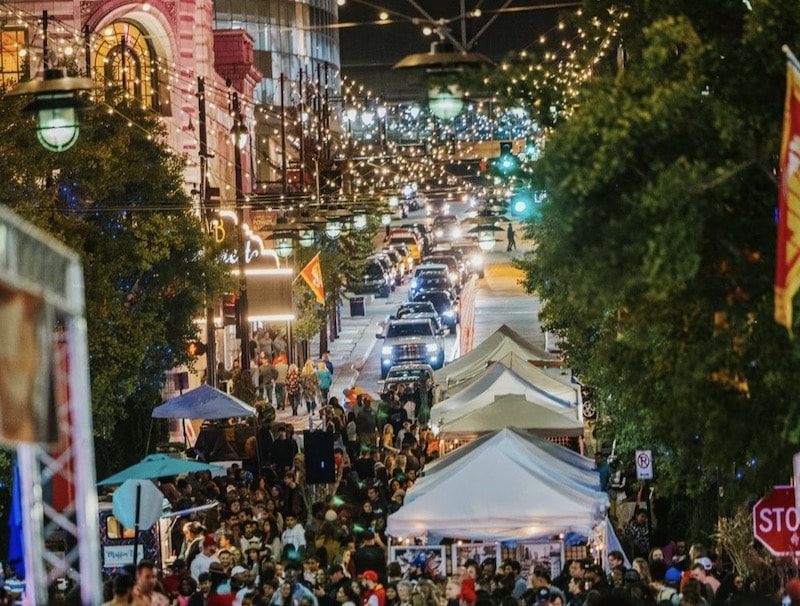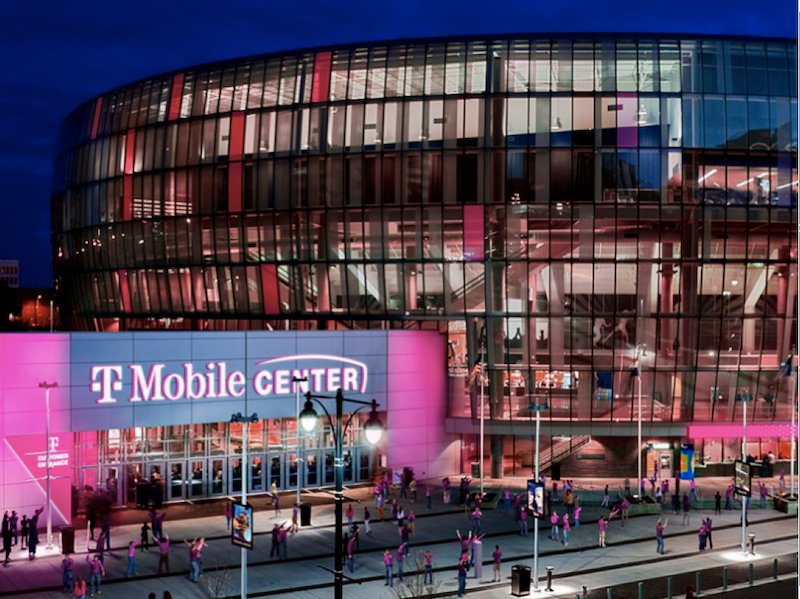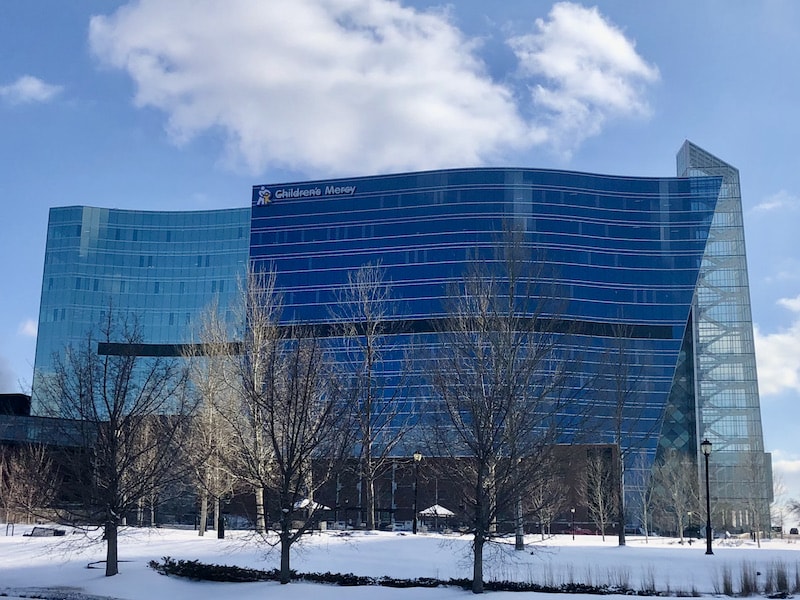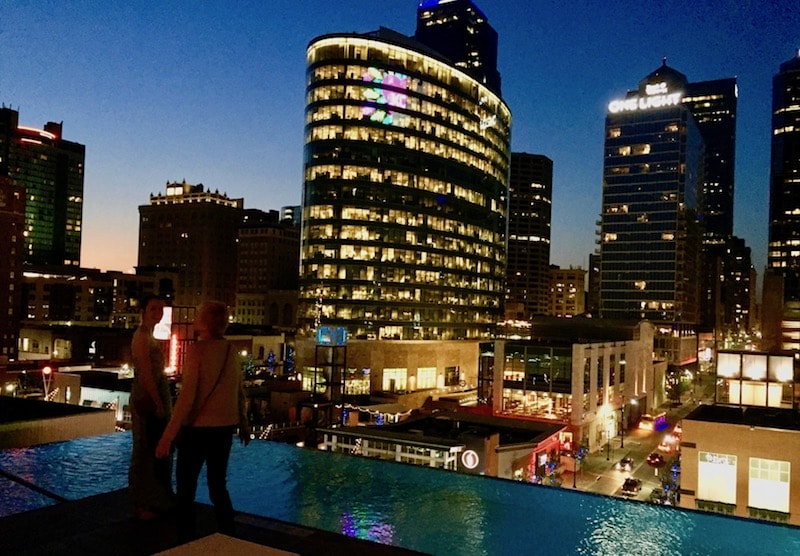Opinion: Twenty Years Later, Our Downtown Heart is Healthier to Live and Play, More Work Needed

Published January 1st, 2023 at 3:10 PM
(Editor’s note: This column was published Oct. 31, but the review of the “Mending Our Broken Heart’ series also is a good way to anticipate the New Year in greater downtown Kansas City.)
By Kevin Collison
Twenty years after The Star published its groundbreaking “Mending Our Broken Heart” series, downtown is back in the game, but needs more work to join the top tier of its peer cities.
We’ve done very well pursuing the live and play sectors of the revival triad, but middling on the work side of the strategic plan.
There were 28,000 people living in greater downtown in 2020, according to the Census, up 29 percent from 2010, a big plus for the first recommendation of the series: “Downtown Revival Hinges on Housing.”
A key indicator of downtown’s residential evolution is its robust Downtown Neighborhood Association.
Another big plus are the investments we’ve accomplished for the “Diversions Needed for Downtown to Thrive” installment of the series.
We’ve added big entertainment venues like the T-Mobile Center, Power & Light District and the Kauffman Center for the Performing Arts as well as homegrown attractions like the East Crossroads microbrewery scene.
There’s also been progress in the “Roots of Revival: Safety, Cleanliness, Nature” recommendation.
Streets, sidewalks and landscaping are in better shape thanks to the Downtown Community Improvement District established by the Downtown Council, which includes the Loop and River Market.

The REVERB project in the Crossroads is part of a residential revival that led to 28,000 downtown residents, according to the 2020 Census.
But there are still too many crumbling sidewalks and curbs, weeds and vacant buildings. MoDOT’s poor maintenance of the freeway loop is an eyesore. And while downtown has plenty of green space, its parks are are not well used or programmed.
As for safety, downtown, as the rest of the city, suffers from the overall ineffectiveness of the Kansas City Police Department. Even with the big influx of residents, quality of life issues don’t seem to be important to police.
Dangerous, loud stunt driving in major intersections, packs of motorcyclists revving their engines at all hours, car and business burglaries; KCPD has to step up its game for downtown to reach its potential as a neighborhood.
Just a month ago, a driver doing donuts downtown killed two people while fleeing police. He sped through a red light at 13th and Grand, striking a pickup truck. The pickup driver and a passenger in the fleeing vehicle died.
As for the “Parking, Transit Woes Drive Folks From a Barren Loop” segment, it’s a mixed bag.
A major improvement is the streetcar line, one of the innovations we didn’t even consider when the “Mending” series was written 20 years ago.

A screenshot from a video posted to Twitter of a stunt-driving incident last year at 13th and Grand.
The streetcar and the affection it has stirred among younger adults has been as much a psychological success as a way to move people and stimulate development.
Parking remains a problem.
There continue to be too many surface lots and while there have been several new garages built, there still isn’t an approach to sharing garages for developments, and making them easily available and identifiable for public parking.
Which brings us to the finale of the “Mending” series, “Can We Fix It? Downtown Needs Triad of Support for Revival.” It called for leadership from the political, business and philanthropic communities.
Politically, what’s transpired over much of the past 20 years has not continued the impressive momentum launched by former Mayor Kay Barnes after the series was published in 2002.
First, City Hall has been sporadic in its support for downtown.
Barnes was followed by Mayor Mark Funkhouser, who hit the brakes on her downtown revival. Mayor Sly James picked up the downtown baton, succeeding in his first term before losing his City Council support.

Former Mayor Barnes enjoyed unveiling of sculpture honoring her, “Woman Walking Tall,” at the ballroom named after her at the Convention Center in 2018.
Mayor Quinton Lucas hasn’t articulated his own downtown vision and has failed to form a working coalition on the Council to achieve his goals.
As for the city bureaucracy, from liquor permits to inspections, it remains a regular source of frustration for businesses ranging from young entrepreneurs trying to open a microbrewery to developers pursuing big housing projects.
Particularly damaging, the city tax incentive tools and the development agencies used to provide essential financial help during the early years of downtown’s revival have been under constant assault the past 15 years.
There is a destructive myth, perpetuated either willfully or ignorantly by critics, that property tax abatements are hard cash coming from the city treasury and/or money being taken from schools and libraries. They are not.
Most tax incentives are generated by the new revenues that would not have existed without a private developer investing in a project. That property continues to pay the same amount of taxes to the city, schools and libraries as it did before.

The T-Mobile Center, formerly the Sprint Center, was among the major entertainment venues built as part of downtown’s revival.
The most unfortunate development since “Mending” was published has been the rise of a zero sum mentality in the city. East Side advocates believe that if something positive is happening downtown, it must mean their community is being shortchanged.
Not true. The city has always been eager to assist East Side development with its incentive tool box, but it requires a private investor to take the lead.
On the business side, greater downtown private employment grew modestly from 2002 to 2019, about 4.5 percent, according the Census. There were about 110,650 private jobs in greater downtown in 2002, and 115,600 in 2019, the latest numbers available.
The biggest gains during that period were in the healthcare industry, thanks to the growth at Hospital Hill. That sector grew from 7,548 employees or 6.8 percent of the downtown workforce in 2002 to 12,251 in 2019, 10.6 percent.

The new Children’s Mercy Research Institute tower that opened in 2020 is an example why Hospital Hill has been a major source of new downtown jobs over the past 20 years.
The sharpest decline was the information sector. More than 11 percent of the workforce, 12,394 people, worked in information-related fields in 2002. That number dropped to 3,656 employees, or 3.1 percent of the workforce, in 2019.
That loss may be due in part to the sale of DST Systems in 2018 to Connecticut-based SS&C Technologies Holdings. DST was a huge player in downtown with thousands of workers and an unknown number lost their jobs after the sale.
Another winner has been the hospitality and restaurant industry, up from 6,142 employees or 5.6 percent of the workforce to 8,207 in 2019, 7.1 percent. Those gains may be related to the new entertainment venues and hotels that have opened.
The prospect that private employers may yet become a bigger part of downtown’s revival is unclear. The Covid pandemic and its impact on work habits with more people working at home has affected not just Kansas City, but many major cities.
Downtown Kansas City also continues to face relentless competition from the Johnson County suburbs when it comes to jobs and employers.

The H&R Block headquarters (center) and surrounding Power & Light District were hallmarks of former Mayor Barnes push to revive downtown after decades of neglect.
Twenty years ago, former H&R Block chief executive Mark Ernst brought his firm downtown because he believed its diversity and eclectic atmosphere was a powerful tool to attract young talent.
By the looks of the booming office developments along the I-435 corridor in southern Johnson County however, that attitude hasn’t taken hold.
Finally, the philanthropic community and foundations have not answered the call for leadership sounded in The Star “Mending” series.
With the exception of the Kauffman Center, which benefited from the largesse of Julia Irene Kaufmann, and the new YMCA, there’s been scant evidence of civic leaders leading or backing downtown’s revival, particularly financially.
Most of the major entertainment initiatives, with the exception of the planned KC Current women’s professional soccer stadium, have been enabled with public dollars. As for residential projects, a large share have been built by out-of-town developers.

Port KC has issued a request for qualifications for an environmental study for the proposed $160 million South Loop Link Park that would deck the freeway four blocks from Wyandotte to Grand. (Rendering from Port KC RFQ)
Look 200 miles north to Omaha to see what leadership and money from civic benefactors can do for a downtown. That city is currently completely overhauling its downtown parks at a cost of $325 million, all but $50 million from private sources.
There are visionary initiatives underway in Kansas City as well.
Downtown advocates are pursuing a South Loop Link project that would build a four-block park above I-670, reconnecting the business district with the Crossroads. Backers of the $160 million proposal are seeking at least $20 million in private funding.
So far, the New York owners of the Loews Convention Hotel are the only ones who’ve chipped in with a $5 million donation. If big local donors are looking for a civic project to get behind, this is it.
Looking forward, the next big thing for downtown is expected to be the Royals proposal to build a ballpark. That project will require not only major private financial support, but substantial civic and political leadership too.
Downtown ballparks in other cities have proven to be major economic catalysts, particularly for housing and entertainment. Bringing the Royals downtown would be a huge win for its continued revitalization.

A rendering of a potential downtown Royals ballpark released by the ball club.
Continuing the streetcar extension to UMKC should benefit not only downtown, but the entire corridor called the River-Crown-Plaza. Improving our downtown parks, making them more appealing and giving people things to do, will help.
Most of all, Kansas City needs to recognize our downtown revival is not finished, and will be an ongoing endeavor.
While we’ve made big strides the past 20 years, so have our peer cities including Denver, Minneapolis and Indianapolis, and smaller regional cities as well such as Little Rock, Oklahoma City and Des Moines.
Our downtown heart is much healthier than it was in 2002 when “Mending” came out. That’s thanks to the people who’ve decided to live and play there, and the voters who’ve supported it, but more is needed from our political and civic leadership.


